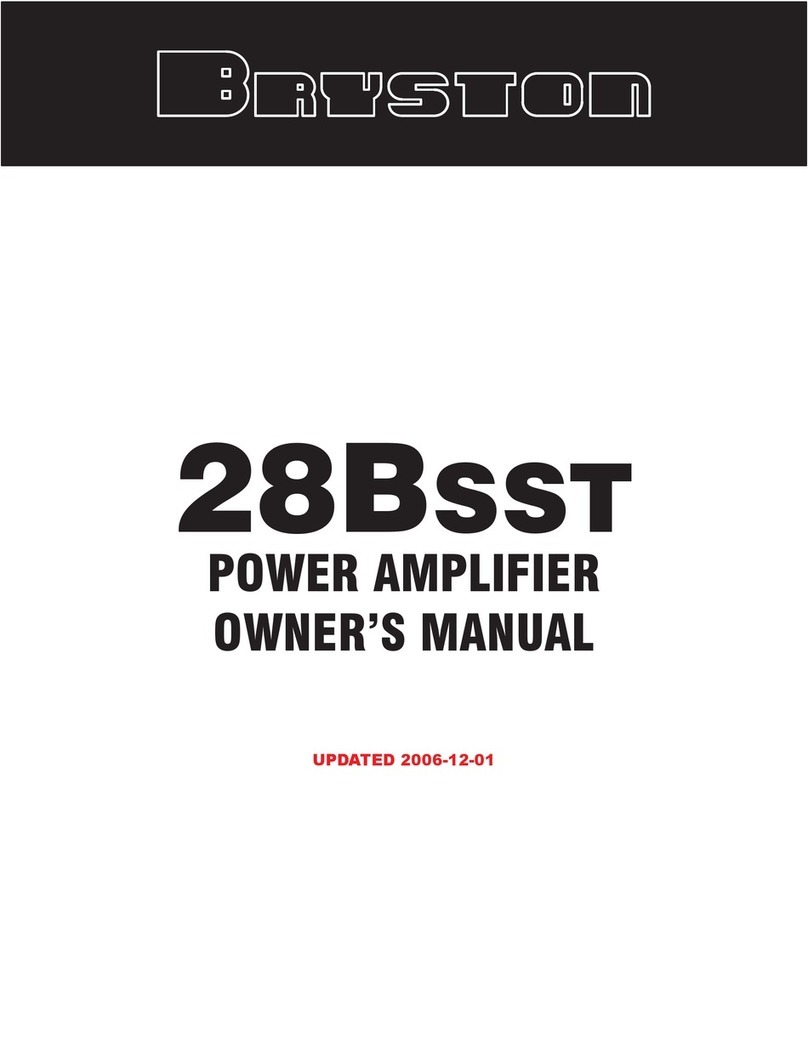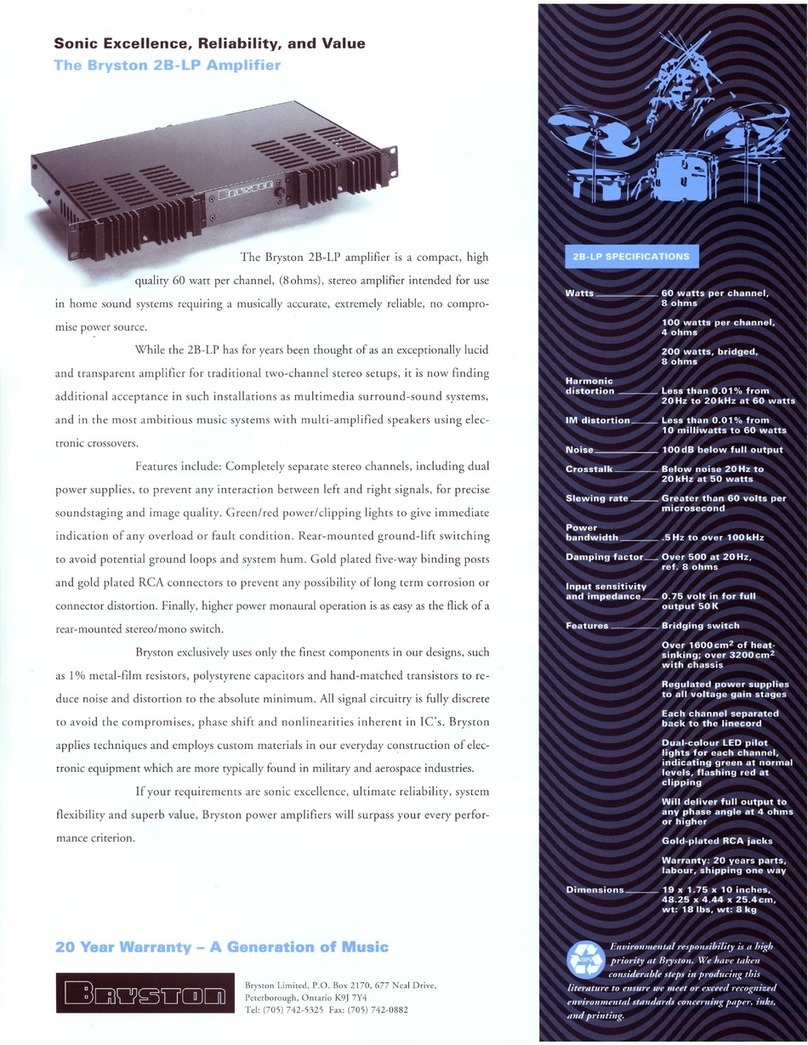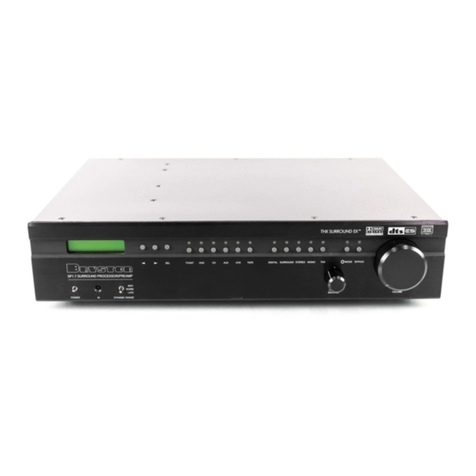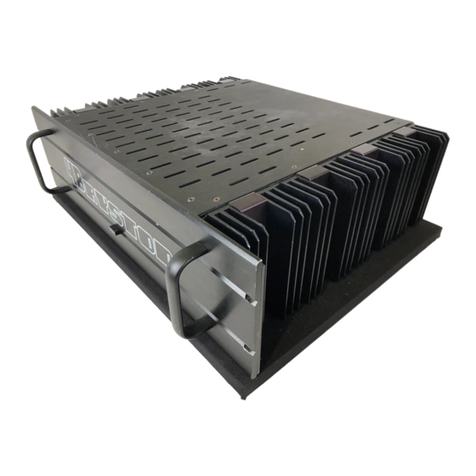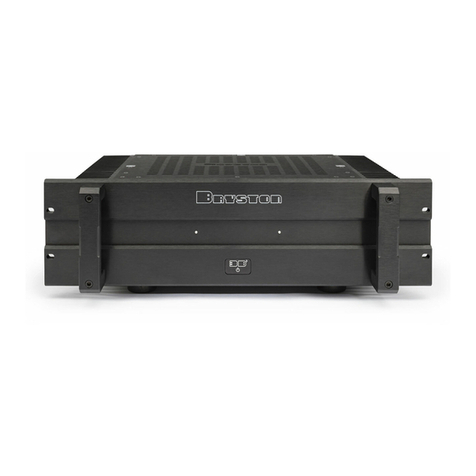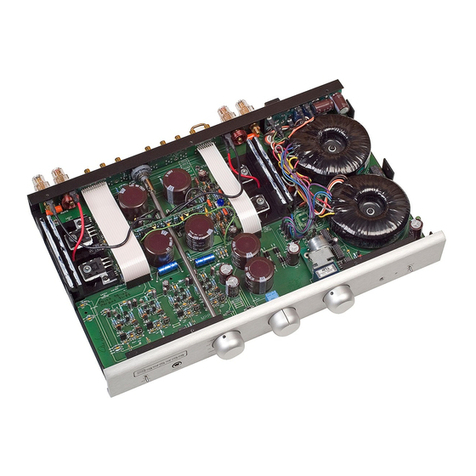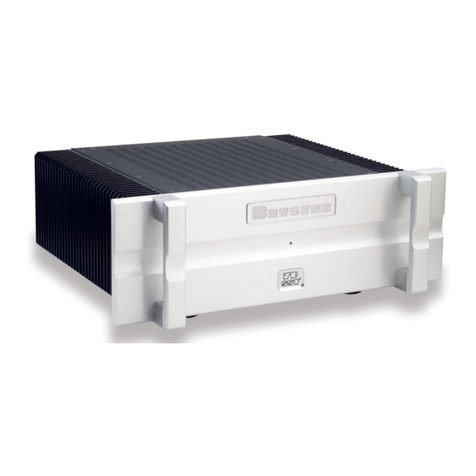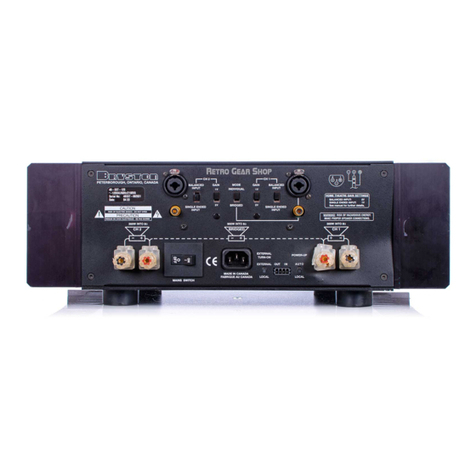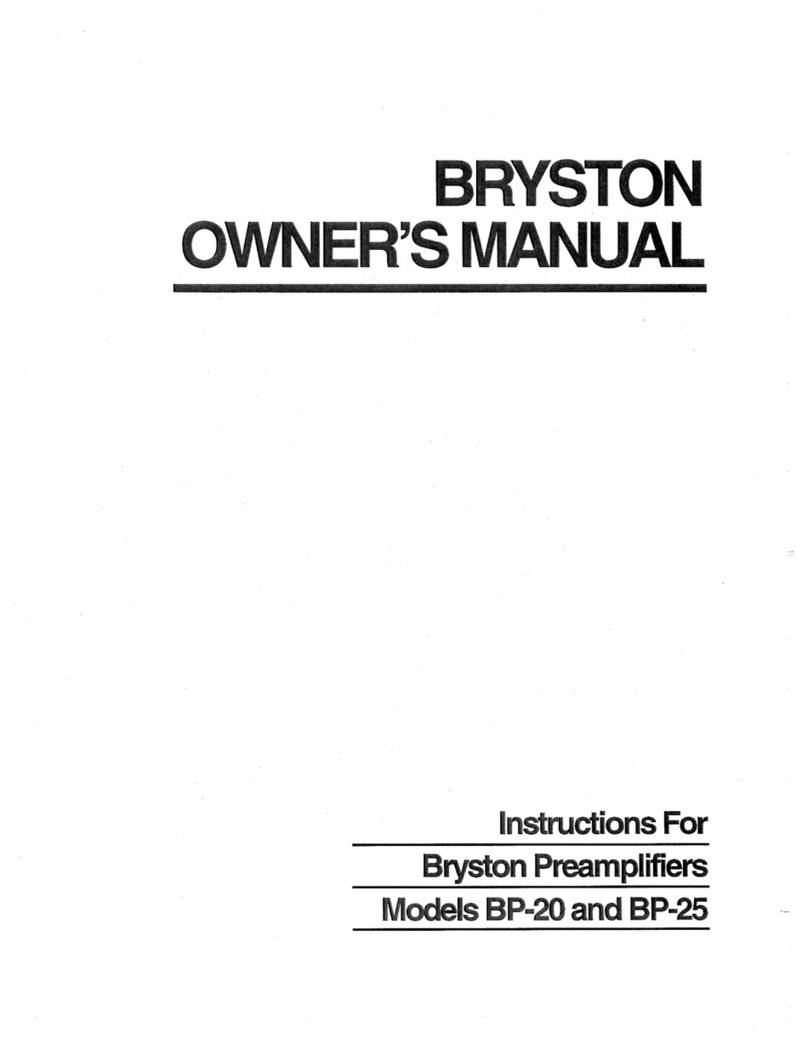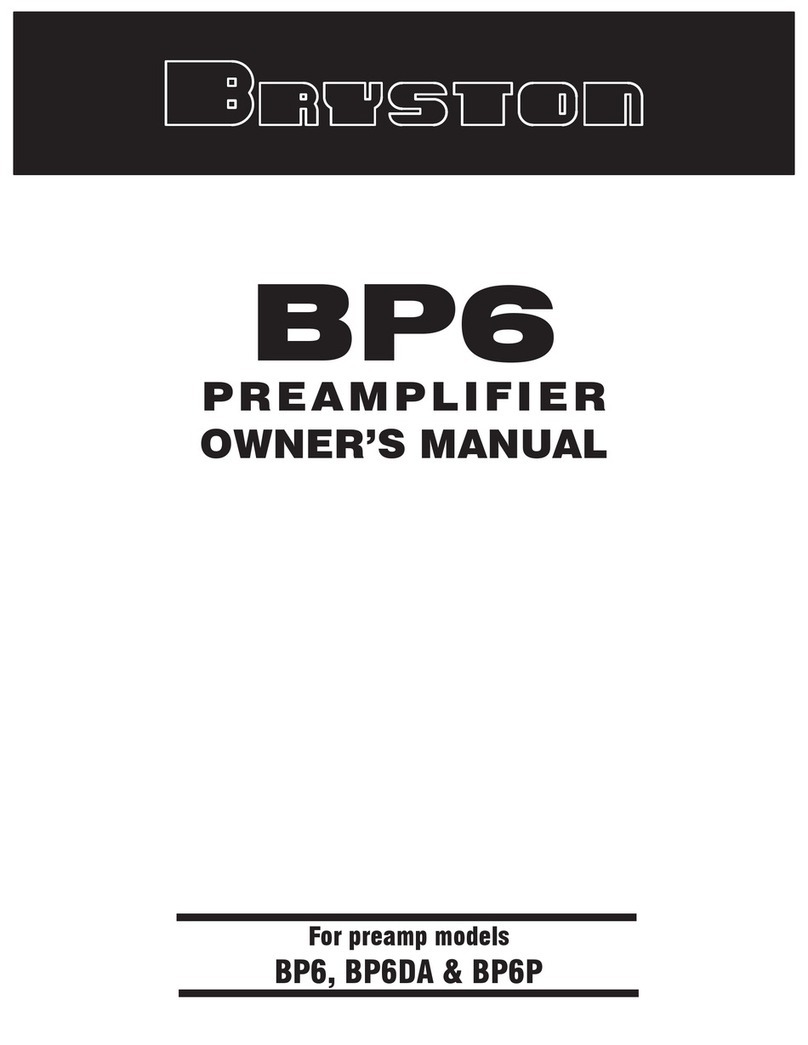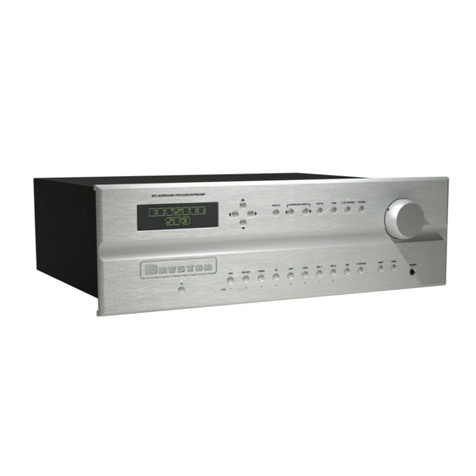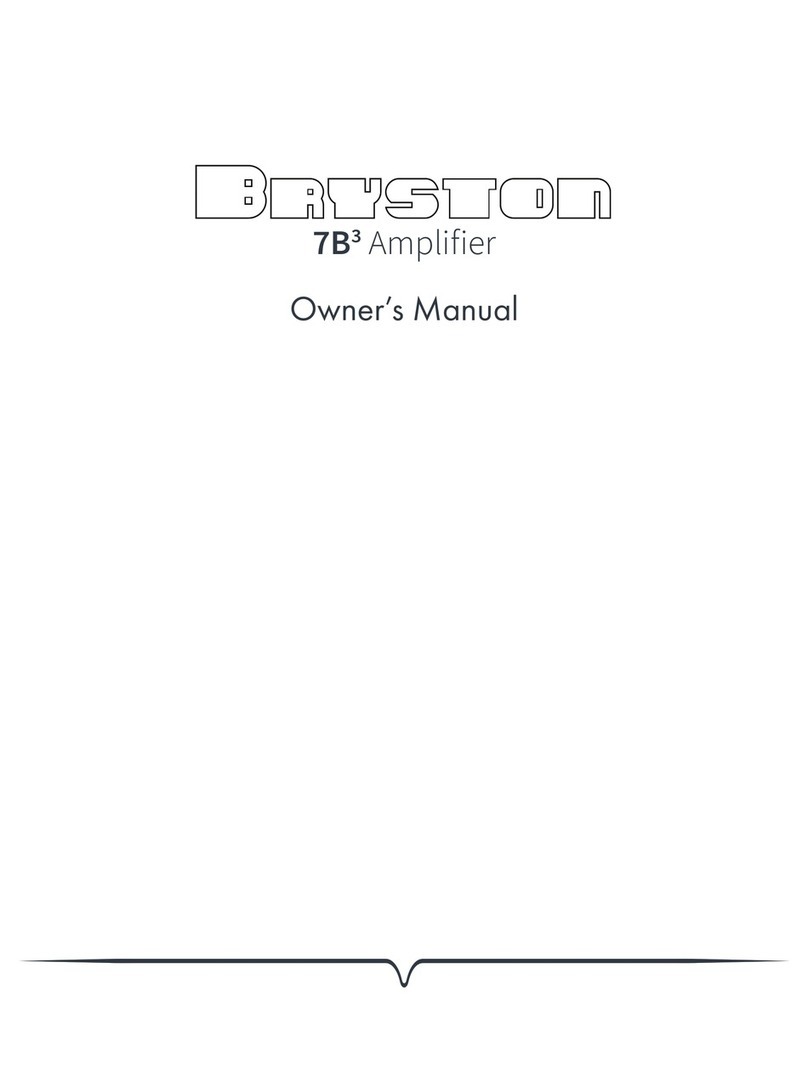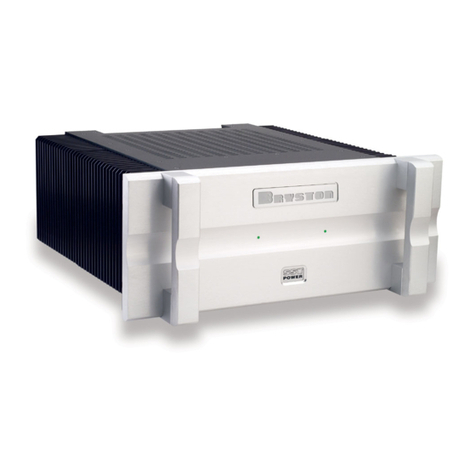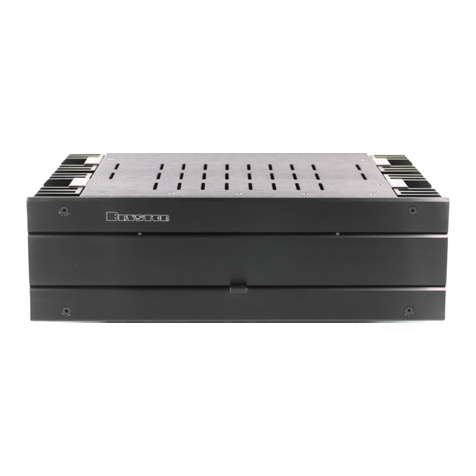The Bryston Model .5B is a
basic signal preamplifier with
switching
facilities
for
a
simple, high
quality
sound
system,
including
phono,
tuner, tape deck and CD/aux-
iliary. The included diagram
will illustrate the switching
functions
of
the
Bryston
Model .5B preamplifier.
TAPE
MONITOR FUNCTION
The tape
monitor
switch
(labelled
"Tape"),
allows
monitoring, through the main
outputs, of whatever appears
at the tape inputs. Thus,
if
a
tape recorder has a third,
playback head, this will allow
the audition
of
a tape recor-
ding as it is being made. Simp-
ly plug the
output
from the
playback head
to
the "Tape
In-
put"
jacks.
Pressing
the
switch activates the
monitor
function.
TAPE
LOOP
The
tape switch also allows
for external processor looping.
A
noise
reduction
unit,
equalizer or other audio
ac-
cessory is fed from the "Tape
Output' jacks, (which exit
prior to the volume control).
The processed
output
from
the accessory is fed back into
the tape inputs. The tape
switch then allows the inclu-
sion
of
the processor in the
signal path when pressed,
or
its exclusion from the signal
path when left in the 'Out'
position.
LOW FILTER
The inflection point of the
rumble filter has been chosen
at 31.7Hz
to
correspond to the
lowest signal frequencies like-
ly
to
be
found in recorded
music, and
to
a suggested
revision to the RIAA recording
curve for
LP
discs. For these
reasons, and for the more im-
portant reason
of
avoiding low
frequency transient overshoot,
ringing and phase misalign-
ment, the low filter is a
"minimum"
type,
with
a
6dB/octave
slope
below
cutoff. This is quite effective in
reducing
subsonic
woofer-
wobble and
its
attendant inter-
modulation effects, however,
since the most problematic
turntable and warp-induced
rumble frequencies, in the
area of 2-5Hz, are reduced
an
average of about 20dB or a
factor
of
100
in
terms
of
power
demand. The low filter
switch
is active in the 'In' position,
and affects only the phono in-
puts.
MUTE SWITCH
The listener often is called
momentarily
away
from
critical listening,
to
answer
the phone for example, and
wishes to reduce the gain for a
short time without disturbing
the volume control setting.
The
mute
switch
reduces
preamp gain by 20dB. Thus the
music may still
be
heard, but
at a background level. This is
also
useful
for
changing
records, cueing the stylus
manually
to a particular song,
cleaning the stylus with a
brush, etc. The mute switch is
active
in the 'In' position and
affects
only the main
outputs
without
disturbing the tape
outputs.
MONO
FUNCTION
Occasionally a system will
display
some offset in gain
favouring one channel over the
other
due
to
slight differences
in speaker
efficiency
, dif-
ferences in room loading, or a
somewhat
off-center listening
position
dictated
by
room
decor
. Thus it is convenient
to
"mono"
the signal to obtain
the most unambiguous center
image,
convenient
to
ad-
justing
the balance control.
For reasons
of
simplicity
,
rather than having a separate
switch
for
this
function, the
"Mute"
switch aIso connects
the
two
channels in Mono. Ob-
viously, the listener may wish
to
advance the volume control
to
provide sufficient level for
establishing center image. Do
not
forget
to
reduce
the
volume control again before
deactivating the mute
switch
in
this
case,
or
you may be
startled by the sudden in·
crease in sound level. The
balance control is a tailored
in-
flection
type which has very
gradual action near the center
of
rotation
for
fine
ad-
justments
to the left-right
balance of the stereo image.
